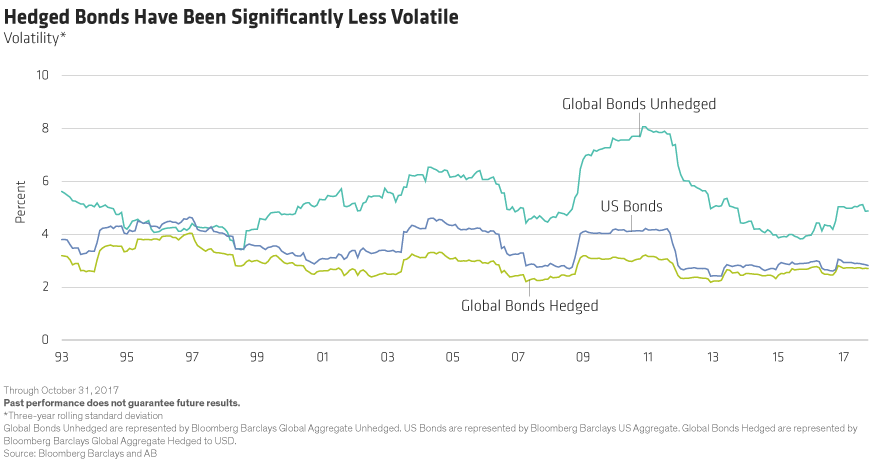With the Federal Reserve hiking and US rates on the rise, there’s never been a better time to reposition into global bonds as your core mandate. But when you do, it’s crucial to fully hedge against currency risk.
Here’s why. Bonds have two main sources of return: income (the return from coupon payments) and change in price (the return from capital appreciation). Most of a bond’s return comes from its income, which is stable. A smaller contribution comes from the change in its price. The contribution from change in price is small since, unlike equities, bonds have limited upside; eventually, all bonds mature at par.
Global bonds provide a third source of potential return: currency exposure. Many investors choose not to hedge away the impact of currency fluctuations in the hope that currency exposure will boost returns over the long run. They also assume that multiple sources of return—income, price and currency—will reduce their overall risk. Some simply assume that currency hedging is expensive.
It turns out that none of these assumptions is correct.
Hedging Is Cheap and Easy
To begin with, currency hedging can be implemented cheaply and effectively with currency forwards and futures. In fact, the currency forward markets are among the most liquid markets in the world, making transaction costs very small—on the order of one to two basis points to initiate a hedge from a developed-market currency into US dollars, then an eighth to a quarter of a basis point to roll it forward as needed.
Hedged Global Has Outperformed Unhedged…
Furthermore, over long periods, hedged portfolios have beaten unhedged in terms of historical returns. Over the 20 years ending October 31, 2017, a US dollar–hedged global bond portfolio, represented by the Bloomberg Barclays Global Aggregate Bond Index, generated an annualized return of 5.0%, versus 4.5% for its unhedged counterpart.
…with Much Less Risk
But most surprisingly, although currency exposure might have been viewed by some investors as a diversifying risk, it did nothing to reduce overall volatility. As shown in the Display below, currency-hedged global bonds have consistently been much less volatile than unhedged global bonds, and even less volatile than US bonds—thanks to the benefits of economic-cycle diversification.

It’s a reminder that currency—in and of itself—is almost twice as risky as fixed income.
And while it may be appropriate at times to take on opportunistic currency risk in global bond portfolios, core bond investors—those seeking to use bonds as a source of stability in their asset allocations—should adopt a fully hedged portfolio as their default position.
The views expressed herein do not constitute research, investment advice or trade recommendations and do not necessarily represent the views of all AB portfolio-management teams.